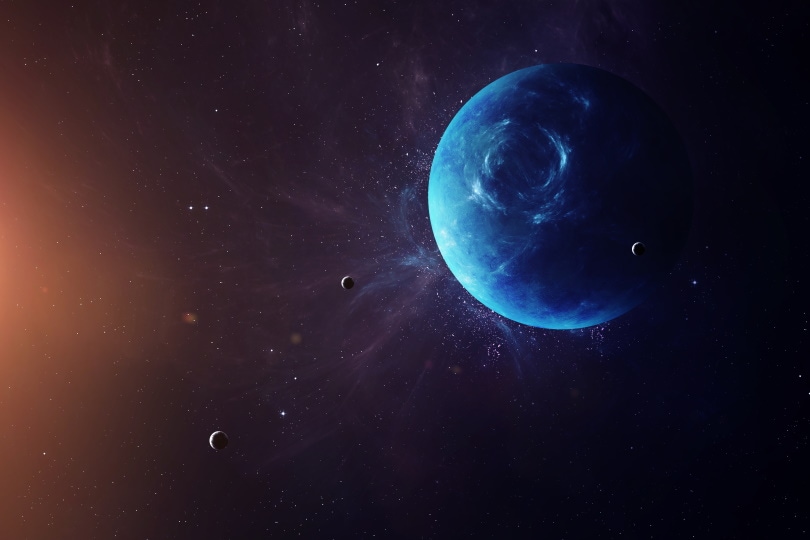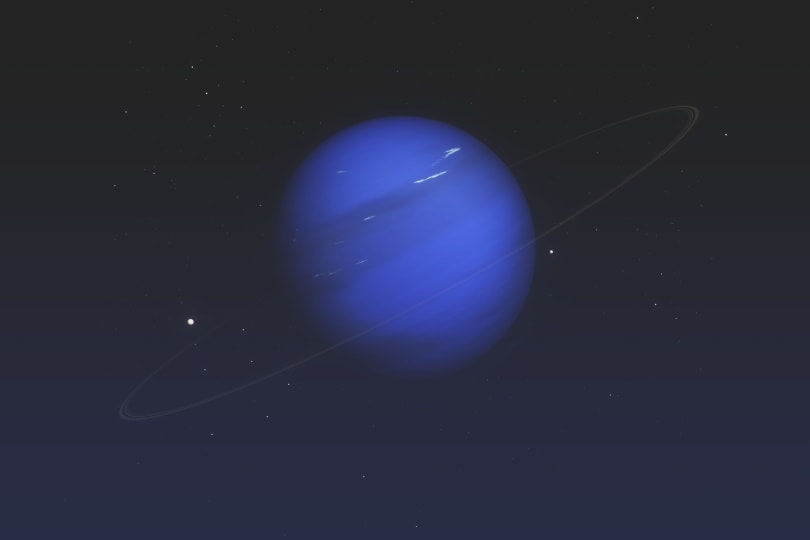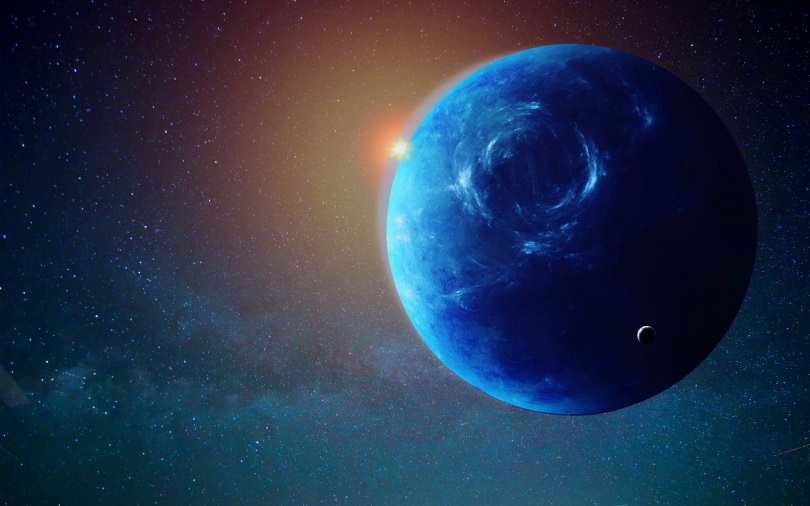How Far Is Neptune From the Earth?
Last Updated on

While Neptune might be the eighth planet from the Sun, that hasn’t stopped determined backyard astronomers from trying to spot it in the sky. But if you are trying to spot Neptune, you are going to need excellent conditions and an even better telescope because it’s so far from Earth.
But exactly how far away is Neptune from Earth, and how long would it take light to reach there? We’ll answer all those questions and more here.

Elliptical Orbits and Moving Targets

Tracking down the distance between Earth and Neptune is no easy affair. That’s because both planets have elliptical orbits, which means that they’re not always the same distance from the Sun. Not only that but Earth and Neptune are also moving at different speeds along vastly different orbits.
So, tracking down the distance between the two planets is constantly changing, and most of it is theoretical and won’t happen in your lifetime. That’s because it takes 165 years for Neptune to complete one orbit around the Sun!
To reach the longest possible or shortest possible point requires the shortest possible distance on each orbit to happen at the same time, and that’s incredibly rare.
How Far Is Neptune From Earth?

At their closest possible meetings, Earth is “only” 2.67 billion miles from Neptune. But when they’re on opposite sides, that distance can stretch to 2.9 billion miles.
While that might not seem like a big difference at first blush, when you break it down, that’s 160 million miles! So, if you want an exact answer to the current distance between Neptune and Earth, you might have to head over to NASA, but if you’re okay with averages, that distance is 2.73 billion miles — but that might be 100 million miles or so off!
How Long Does It Take for Light From Neptune to Reach Earth?

Once again, this comes down to the distance between the two planets. Light travels at 186,000 miles per second, so all you need to do is take the distance from Neptune and Earth and divide it by 186,000 to get the number of seconds!
At its average distance from Neptune, it takes 14,677 seconds for light to reach us. That works out to 4 hours and 4 minutes! At our farthest possible distance, that number grows to 4 hours and 20 minutes, and it can shrink to as little as 3 hours and 59 minutes.
If you’re trying to work out how old the light is, you can roughly double each measurement, as that’s about how long it takes for the light to reach Neptune and reflect to Earth.
So, if you’ve managed to spot Neptune through a telescope, the light that you’re looking at is a little over 8 hours old!

Conclusion
With so much space between Neptune and us, it’s no wonder that it’s so hard to spot. But as with everything, perspective is vital. While Neptune is the farthest planet from Earth, it’s practically right next to us compared to other cosmic objects.
The next closest star system is Alpha Centauri A and B, and Proxima Centauri is over 9,000 times as far away! So, the next time that you’re stargazing, keep in mind how far the light from each star had to travel to reach you!
You might also be interested in:
- How Far Is Uranus From the Sun?
- How Far Away Is Jupiter? How Long Would it Take to Travel There?
- How Far Away Is Mars? How Long Would it Take to Travel There?
Featured Image Credit: Vadim Sadovski, Shutterstock
About the Author Robert Sparks
Robert’s obsession with all things optical started early in life, when his optician father would bring home prototypes for Robert to play with. Nowadays, Robert is dedicated to helping others find the right optics for their needs. His hobbies include astronomy, astrophysics, and model building. Originally from Newark, NJ, he resides in Santa Fe, New Mexico, where the nighttime skies are filled with glittering stars.
Related Articles:
How to Clean a Refractor Telescope: Step-by-Step Guide
How to Clean a Telescope Eyepiece: Step-by-Step Guide
How to Clean a Rifle Scope: 8 Expert Tips
Monocular vs Telescope: Differences Explained (With Pictures)
What Is a Monocular Used For? 8 Common Functions
How to Clean a Telescope Mirror: 8 Expert Tips
Brightfield vs Phase Contrast Microscopy: The Differences Explained
SkyCamHD Drone Review: Pros, Cons, FAQ, & Verdict
